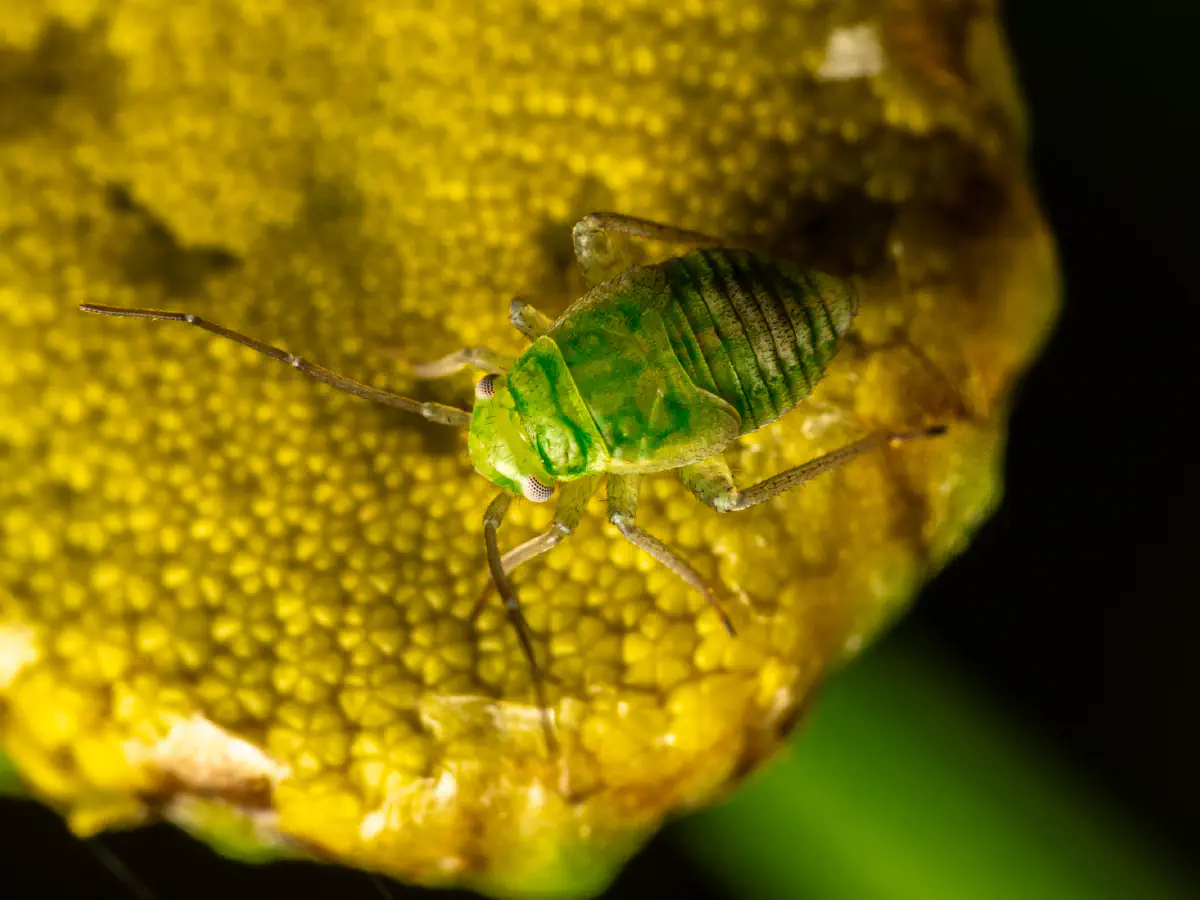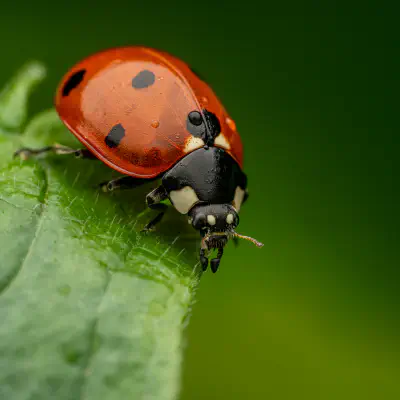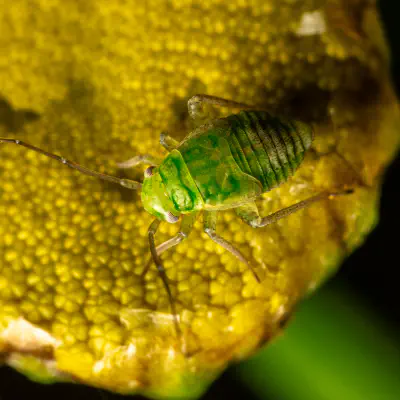In the autumn, female pea aphids lay fertilized eggs overwinter that hatch the following spring. The nymphs that hatch from these eggs are all females, which undergo four moults before reaching sexual maturity. They will then begin to reproduce by viviparous parthenogenesis, like most aphids. Each adult female gives birth to four to 12 female nymphs per day, around a hundred in her lifetime. These develop into mature females in about seven to ten days.
The life span of an adult is about 30 days. Population densities are at their highest in early summer, then decrease through predation and parasitism. In autumn, the lengthening of the night triggers the production of a single generation of sexual individuals (males and oviparous females) by the same parthenogenetic parent females. Inseminated sexual females will lay overwintering eggs, from which new parthenogenetic females will emerge in early spring. When the colony begins to become overcrowded, some
winged females are produced. These disperse to infest other plants, where they continue to reproduce asexually. When temperatures become colder and day lengths shorter, sexual winged females and males appear. These mate, the females lay diapausing eggs and the life cycle starts again. Pea aphids can complete their whole reproductive cycle without shifting host plant. Inbreeding is avoided by the recognition of close kin. Mating between close kin has significantly lower egg hatching success and
offspring survival than outbred mating. Several morphs exist in pea aphids. Besides differences between sexual and parthenogenetic morphs, winged and wingless morphs exist. Overcrowding and poor food quality may trigger the development of winged individuals in subsequent generations. Winged aphids can then colonize other host plants. Pea aphids also show hereditary body color variations of green or red/pink. The green morphs are generally more frequent in natural populations. Acyrthosiphon pisum is a rather large aphid whose body
can reach 4 millimetres (5⁄32 in) in adults. It generally feeds on the lower sides of leaves, buds and pods of legumes, ingesting phloem sap through its stylets. Unlike many aphid species, pea aphids do not tend to form dense colonies where individuals would stay where they were born during their whole lifetimes. Pea aphids are not known to be farmed by ants that feed on honeydews. More than 20 legume genera are known to host
pea aphids, though the complete host range remains undetermined. On crops such as peas and alfalfa, A. pisum is considered among the aphid species of major agronomical importance. Yields can be affected by the sap intake that directly weakens plants, although pea aphids seldom reach densities that might significantly reduce crop production. However, like many aphid species, A. pisum can be a vector of viral diseases to the plants it visits. Protection against pea aphids
includes the use of chemical insecticides, natural predators and parasitoids, and the selection of resistant cultivars. No insecticide resistance is documented in A. pisum, as opposed to many aphid pests. Pea aphids, although collectively designated by the single scientific name A. pisum, encompass several biotypes described as cryptic species, subspecies or races, which are specialized on different host species. Therefore, the pea aphid is more accurately described as a species complex. The pea aphid is thought to
be of Palearctic origin, but it is now commonly found worldwide under temperate climate. The spread of A. pisum probably resulted from the introduction of some of its host plants for agriculture. Such an introduction likely occurred into North America during the 1870s, and by 1900 it had become a serious pest species in the mid-Atlantic states. By the 1950s, it was widespread throughout the United States and Canada. Its host range in North America
is very similar to that of the closely related blue alfalfa aphid (Acyrthosiphon kondoi).



